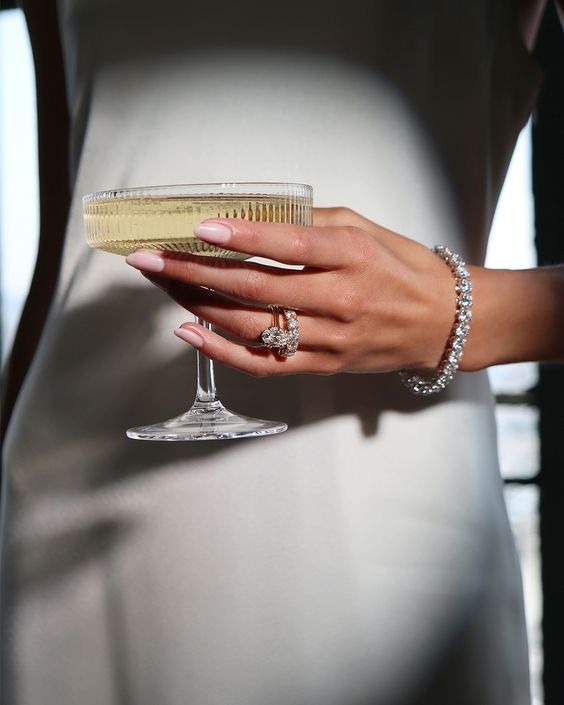
Your Guide to Timeless Choices
Choosing the perfect piece of jewelry is a meaningful journey, reflecting your style, personality, and moments that matter most. In this guide, we’ll walk you through the essentials—from understanding diamonds to finding the right fit—so you can make choices with confidence. Whether you're shopping for a special occasion or a timeless addition to your collection, we’re here to help you every step of the way.
Understanding
The 4 C's of Diamonds
Cut: Bringing Out the Sparkle
The cut of a diamond is one of the most important factors in determining its brilliance. A well-cut diamond reflects light beautifully, creating that unmistakable sparkle. Here’s a look at popular cuts:
- Round: Known for maximum sparkle, the round cut is a timeless favorite, often chosen for its brilliance and classic appeal.
- Princess: Square and brilliant, the princess cut offers a modern look while maintaining excellent sparkle.
- Emerald: With its rectangular shape and step-cut facets, the emerald cut has a sophisticated, vintage feel with a unique hall-of-mirrors effect.
- Cushion: Soft and rounded, the cushion cut combines modern and vintage styles, creating a romantic, pillow-like shape.
- Oval, Pear, and Marquise: Each of these shapes offers a distinctive silhouette, perfect for those who want something unique.
Tip: A well-cut diamond is more important than size when it comes to sparkle—prioritize cut for maximum brilliance.
Color: Finding the Right Hue
Diamonds are graded on a color scale from D (colorless) to Z (light color), with colorless diamonds being the most rare and valuable. Here’s what you need to know:
- D-F (Colorless): These diamonds are incredibly rare and have no detectable color, making them highly sought after.
- G-J (Near Colorless): These diamonds appear colorless to the untrained eye and offer excellent value while maintaining high visual quality.
- K-Z (Faint to Light Color): Diamonds in this range have visible color, often a faint yellow or brown hue, and can be a unique choice in the right setting.
Tip: For settings like yellow or rose gold, diamonds with slight color can look stunning and be a more budget-friendly choice without compromising on beauty.
Clarity: Understanding the Details
Clarity measures the presence of natural inclusions (internal) and blemishes (external) in a diamond. The clarity scale ranges from Flawless (FL) to Included (I):
- FL-IF (Flawless to Internally Flawless): Extremely rare, these diamonds show no inclusions under 10x magnification.
- VVS1-VVS2 (Very, Very Slightly Included): Minor inclusions, difficult to see even under magnification, making them nearly flawless to the naked eye.
- VS1-VS2 (Very Slightly Included): These diamonds have small inclusions that are still hard to detect, offering excellent value with minimal visual impact.
- SI1-SI2 (Slightly Included): Inclusions are noticeable under magnification and sometimes to the naked eye but can be a great choice for budget-conscious buyers.
- I1-I3 (Included): Visible inclusions, often affecting the diamond’s durability and sparkle.
Tip: Choose a clarity grade based on your personal preference and budget—some inclusions are barely noticeable and can offer great value.
Carat Weight: Finding the Right Size
Carat weight measures the size of a diamond, but it doesn’t always correlate with quality. Here’s how to approach carat weight:
- 0.5 to 1 Carat: A popular choice for those seeking a classic look without a high price tag.
- 1 to 2 Carats: Often seen as a standard for engagement rings, this range offers presence while remaining wearable.
- 2 Carats and Above: Makes a bold statement and is perfect for those looking to invest in a standout piece.
Tip: Choose a carat weight that suits your style and budget. If you’re after size, consider slightly lower clarity or color grades—these often have little visual difference to the naked eye.
Finding the Right Ring Size
-
Measuring at Home
To find your ring size at home, all you need is a piece of string or a strip of paper:
- Wrap the string or paper around the base of your finger.
- Mark where the string or paper meets, then measure the length with a ruler.
- Use a ring size chart to match your measurement with the correct ring size.
This simple method can give you an approximate size, though for greater accuracy, consider using a ring sizer.
-
Using a Ring Sizer
For a more precise measurement, using a ring sizer is recommended. You can purchase an inexpensive ring sizer online or visit a jeweler to get measured professionally. This option helps ensure that your ring fits perfectly, especially for rings that will be worn daily, like engagement rings.
-
Tips for Ring Sizing
Because fingers can change size due to factors like temperature, time of day, and activity level, keep these tips in mind:
- Time of Day: Try to measure your finger size later in the day when your fingers are more likely to be their true size.
- Avoid Sizing When Cold or Hot: Cold weather can cause fingers to shrink, while heat can make them swell. Measure when your hands are at a normal, comfortable temperature.
- Consider a Slightly Larger Size: If you're between sizes, choosing the larger size can offer a more comfortable fit over time, particularly for rings with a wider band that fits snugly on the finger.
Following these steps can help you find a ring size that is comfortable and fits perfectly for any occasion
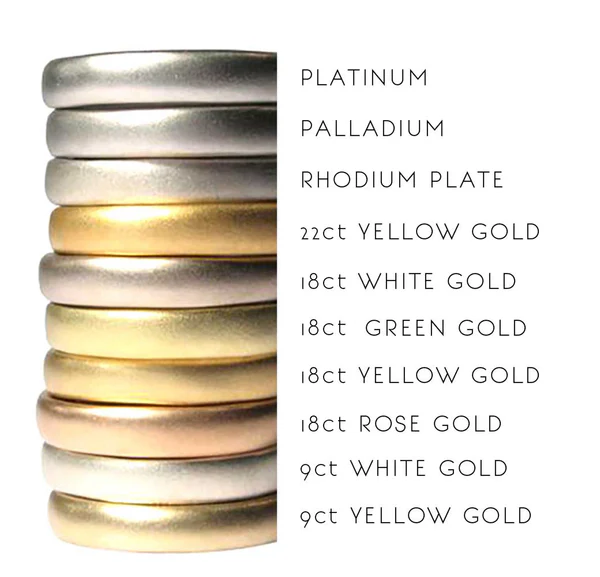
Choosing your Metals
Choosing the right metal can enhance both the look and durability of your jewelry.
Here’s a guide to popular metal options
-
Gold
A classic choice, available in yellow, white, and rose variations. Gold is durable, but higher-karat gold (such as 18k or 24k) is softer and more prone to scratches. Gold is generally hypoallergenic, though alloys in white gold may contain nickel
-
White Gold
Created by alloying yellow gold with metals like palladium, white gold has a sleek, modern look. It’s usually rhodium-plated to maintain its bright finish, though this may need re-plating over time. White gold is great for those who want a platinum look at a more accessible price
-
Rose Gold
Alloyed with copper to create a warm, pink hue, rose gold has a romantic and vintage appeal. It is durable and pairs beautifully with both diamonds and colored gemstones. Keep in mind that copper can cause skin sensitivity in some people
-
Platinum
Known for its strength and natural white luster, platinum is hypoallergenic and ideal for everyday wear, particularly for engagement and wedding rings. Although it’s one of the most durable metals, platinum can develop a patina over time that gives it a unique, antique look
selecting
The Perfect Piece for Every Moment
Casual
For everyday wear, choose pieces that are versatile, comfortable, and durable. Simple gold or silver bands, delicate chains, or small diamond studs are ideal for a subtle touch of elegance without being too flashy
Formal
When dressing up, bolder statement pieces can elevate your outfit. Think about larger diamond earrings, layered necklaces, or a standout cocktail ring. Platinum and white gold tend to pair well with formal wear for a polished, sophisticated look
Engagement and Wedding
These pieces often reflect timeless elegance. Solitaire diamonds in classic settings, such as prong or bezel settings, are popular choices, especially in platinum or white gold. Rose gold is also a romantic choice that adds a warm glow to engagement rings.
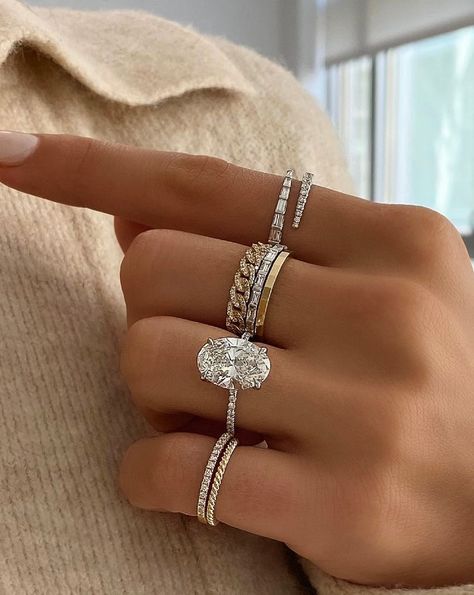
Stacking Rings
Experiment with different metals and textures by stacking multiple rings on one finger or across several fingers. A mix of thin bands with gemstones or plain bands in contrasting colors like yellow and white gold can add depth and interest
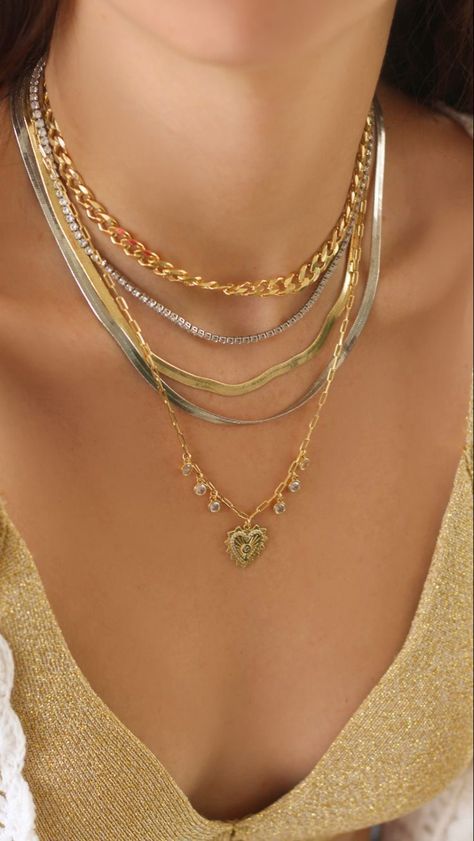
Layering Necklaces
Combine necklaces of various lengths and styles, such as a choker with a mid-length pendant and a longer chain, to create a layered look. Mixing gold with silver or rose gold can add a modern, eclectic feel to your style
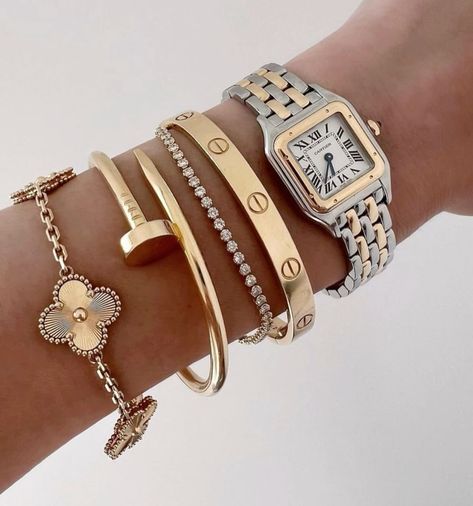
Pairing Bracelets
Try combining bracelets of different widths and textures, such as a chunky gold bracelet with delicate chains or a tennis bracelet. This adds a playful yet sophisticated element to your look
Answering your
Frequently Asked Questions
How do I know which diamond shape suits me best?
Each diamond shape has a unique character, and choosing the right one often comes down to personal style. Round diamonds are timeless and brilliant, while shapes like emerald and oval offer a sophisticated, vintage appeal. Think about the look you want, and don’t hesitate to try different styles!
Which metal is most durable for daily wear?
Platinum is known for its strength and durability, making it ideal for everyday wear, especially for engagement and wedding rings. White gold is also durable but may need re-plating over time. If you're looking for a classic look with resilience, these metals are excellent choices.
How do I care for my diamond ring?
To keep your diamond ring sparkling, clean it regularly with a gentle soap and water solution. Avoid harsh chemicals and store it separately to prevent scratches. For the best results, have it professionally cleaned and inspected at least once a year.
What should I consider when stacking rings?
When stacking rings, mix metals, textures, and widths to create a unique, layered look. Thinner bands pair well with wider ones, and adding a pop of color with gemstones can enhance the look. Just ensure that the rings are comfortable and don’t damage each other.
Are certain diamond settings better for an active lifestyle?
Yes, bezel and channel settings hold diamonds securely, making them great choices for active lifestyles. These settings protect the diamond by encasing it, reducing the risk of damage or loss.
What’s the difference between carat weight and diamond size?
Carat weight refers to the weight of the diamond, while size is how large it appears when viewed from above. Two diamonds of the same carat weight can look different in size depending on their shape and cut. It’s important to consider both for the look you want.
How do I choose a diamond color that suits my style?
Diamonds range from colorless to light hues. Colorless diamonds (D-F) are classic, while near-colorless diamonds (G-J) can offer great value without noticeable color. For warmer settings like yellow or rose gold, a faint-colored diamond can blend beautifully.
What factors affect the sparkle of a diamond?
Cut quality is the biggest factor in diamond sparkle, as it determines how light interacts with the stone. A well-cut diamond, even with lower carat weight or clarity, can appear more brilliant. Shape and setting also play a role in enhancing sparkle.
How do I keep my jewelry looking new over time?
Proper care can maintain the beauty of your jewelry. Regularly clean with mild soap and water, avoid exposing it to harsh chemicals, and store each piece individually to prevent scratching. For fine jewelry, periodic professional cleanings are recommended.
How can I tell if a diamond is ethically sourced?
"Look for certifications from reputable sources, such as the Kimberley Process Certification Scheme, which helps prevent conflict diamonds. Many jewelers, including us, are committed to sourcing diamonds responsibly to ensure ethical and environmentally sound practices.
